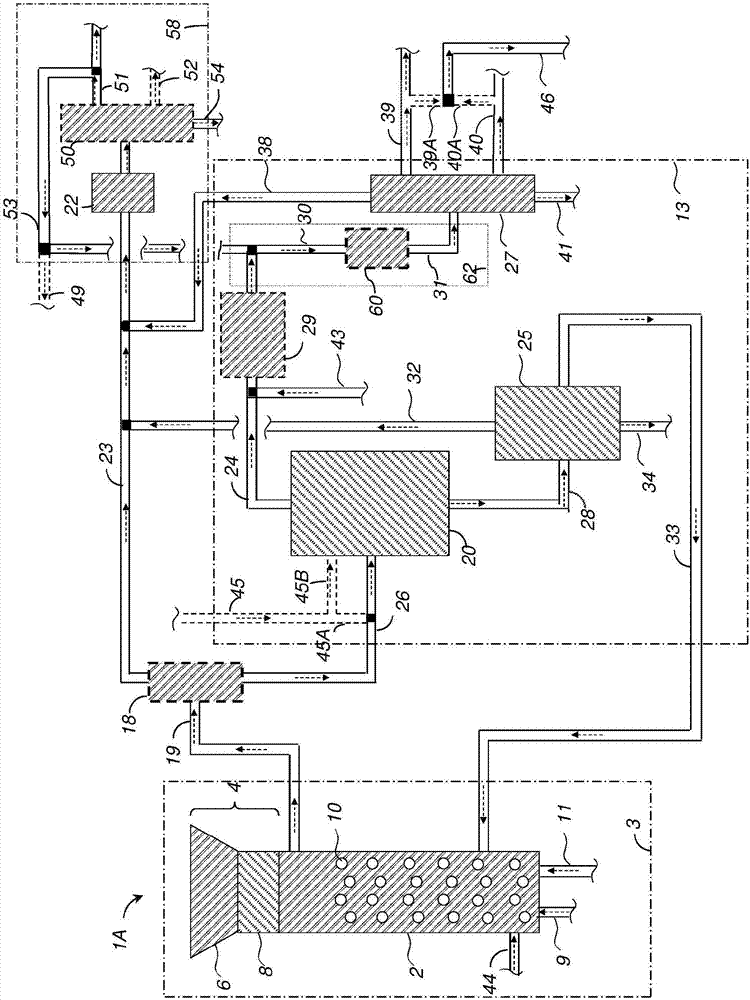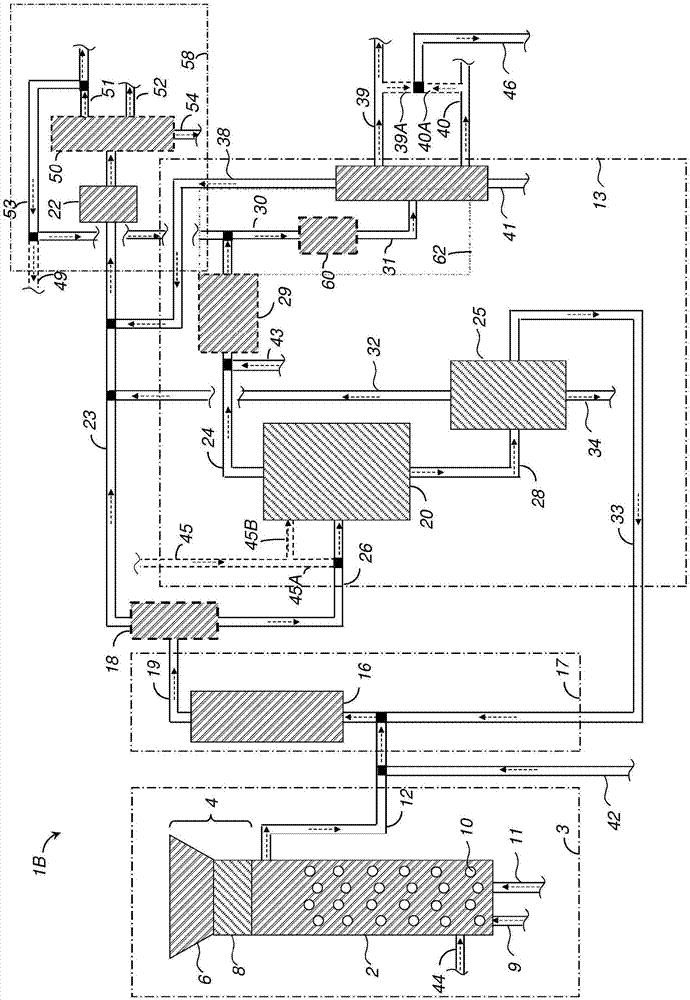Methods and systems for processing cellulosic biomass
A biomass and logistics technology, applied in the use of microorganism/enzyme cellulose treatment, pulping of cellulose raw materials, biological raw materials, etc., can solve the problems of high cost, system downtime, low conversion rate, etc.
- Summary
- Abstract
- Description
- Claims
- Application Information
AI Technical Summary
Problems solved by technology
Method used
Image
Examples
example 1
[0182] Example 1: Distillation of the total reactor contents
[0183] A 450ml Parr reactor is charged with 20.02 grams of 2-methoxy-4-propylphenol (MPP), 190.01 grams of deionized water, 0.4192 grams of potassium hydroxide buffer and 7.2522 grams of nickel oxide promoted Cobalt molybdate catalyst (DC-2534, containing 1-10% cobalt oxide and molybdenum trioxide (up to 30% by weight), and less than 2% nickel) supported on alumina, the catalyst is obtained from Criterion Catalyst&Technologies LP and Vulcanization was carried out by the method described in Example 5 of US2010 / 0236988.
[0184] Then, 14.02 grams of small pieces of southern pine (10% moisture) with a nominal size of 3×5×5mm were loaded into the reactor, and then pressurized with 52 bar of hydrogen, and heated to 190°C for 1 Hours, then slowly increase the temperature to 245°C and keep it for 2.5 hours.
[0185] After the reaction, the reactor was cooled and depressurized. A nominal 14 grams of wood chips were added, then...
example 2
[0195] Example 2: Separation by extraction followed by distillation of the phases
[0196] Using 5.035 grams of RaneyTM cobalt catalyst (WR Grace 2724), and a solvent containing 21.1 grams of 2,6-xylenol as the phenolic solvent, Example 1 was repeated. The 2,6-xylenol was first dissolved to 7.00 grams of methyl isopropyl alcohol. In butyl methanol, and 182.01 grams of deionized water was added to the 450ml reactor. The reaction cycle was carried out at 160°C for 1 hour, then at 190°C for 1 hour, and then at 240°C for 3 hours. Six cycles of wood addition were performed, followed by heating overnight at 270°C under 52 bar H2 to complete the conversion of the intermediate.
[0197] At the end of the reaction procedure, 87.03 grams of toluene (a simulated aromatic gasoline product) was added to the reactor, and the reactor was stirred at 150°C for 2 hours to achieve extraction. Then the stirring was stopped and the reactor was allowed to cool. 127.39 g of the upper toluene-rich phas...
example 3
[0210] Example 3: Adding miscible solvents
[0211] A 75 ml Parr 5000 reactor was charged with 3.01 g of xylenol (2,6-dimethylphenol), 21.07 g of deionized water, 0.107 g of potassium carbonate buffer, and 0.301 g of Raney cobalt 2724 catalyst (WR Grace ). Load 2.0 grams of ground American longleaf pine (nominal 10% moisture). The reactor was pressurized to 52 bar with hydrogen and heated to 190°C for 1 hour, then to 240°C for 4 hours.
[0212] Three more cycles of nominal 2.0 grams of wood addition are completed, and then the last cycle needs to be pressurized with hydrogen to 35 bar and heated to 270°C for 15 hours to expand the degree of conversion of the hydrodeoxygenation reaction.
[0213] At the end of the conversion cycle, the reactor is cooled and depressurized. 44.3 grams of acetone was added to dissolve all reactor contents. As confirmed by magnetic attraction, 0.3 g of recovered catalyst was obtained by filtration, in which there were no visible organic solids and no ...
PUM
| Property | Measurement | Unit |
|---|---|---|
| particle size | aaaaa | aaaaa |
| particle size | aaaaa | aaaaa |
Abstract
Description
Claims
Application Information
 Login to View More
Login to View More - R&D
- Intellectual Property
- Life Sciences
- Materials
- Tech Scout
- Unparalleled Data Quality
- Higher Quality Content
- 60% Fewer Hallucinations
Browse by: Latest US Patents, China's latest patents, Technical Efficacy Thesaurus, Application Domain, Technology Topic, Popular Technical Reports.
© 2025 PatSnap. All rights reserved.Legal|Privacy policy|Modern Slavery Act Transparency Statement|Sitemap|About US| Contact US: help@patsnap.com



